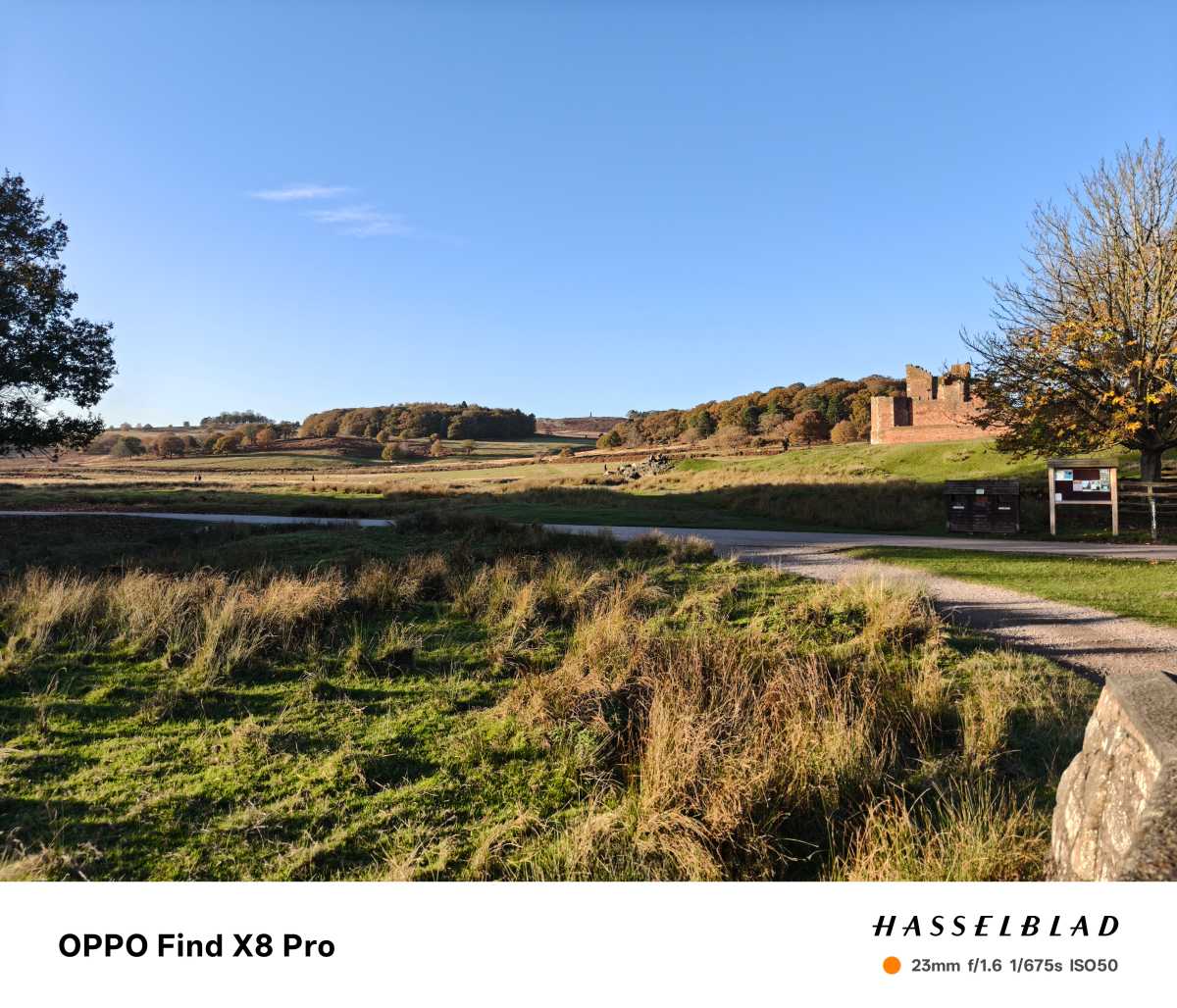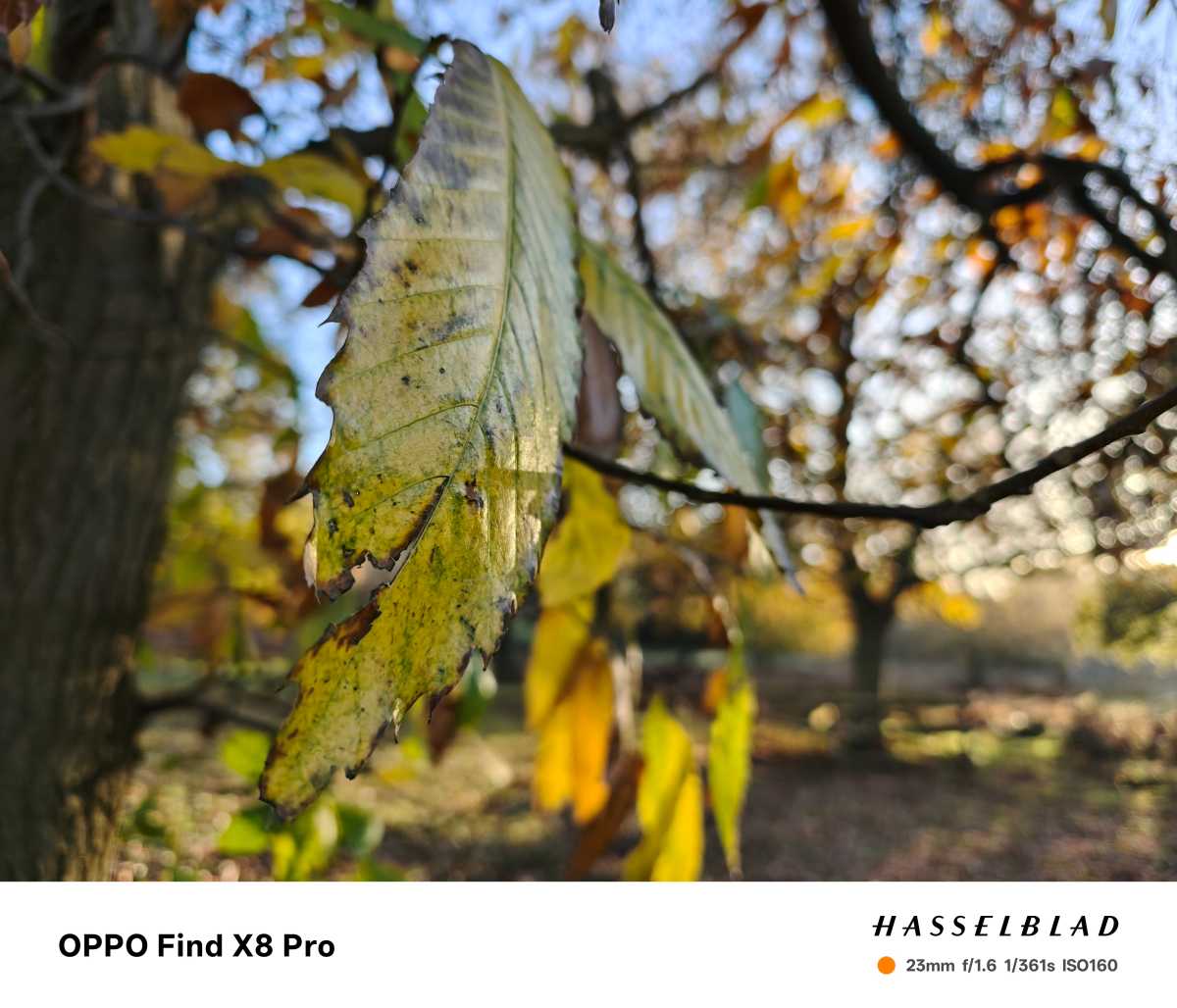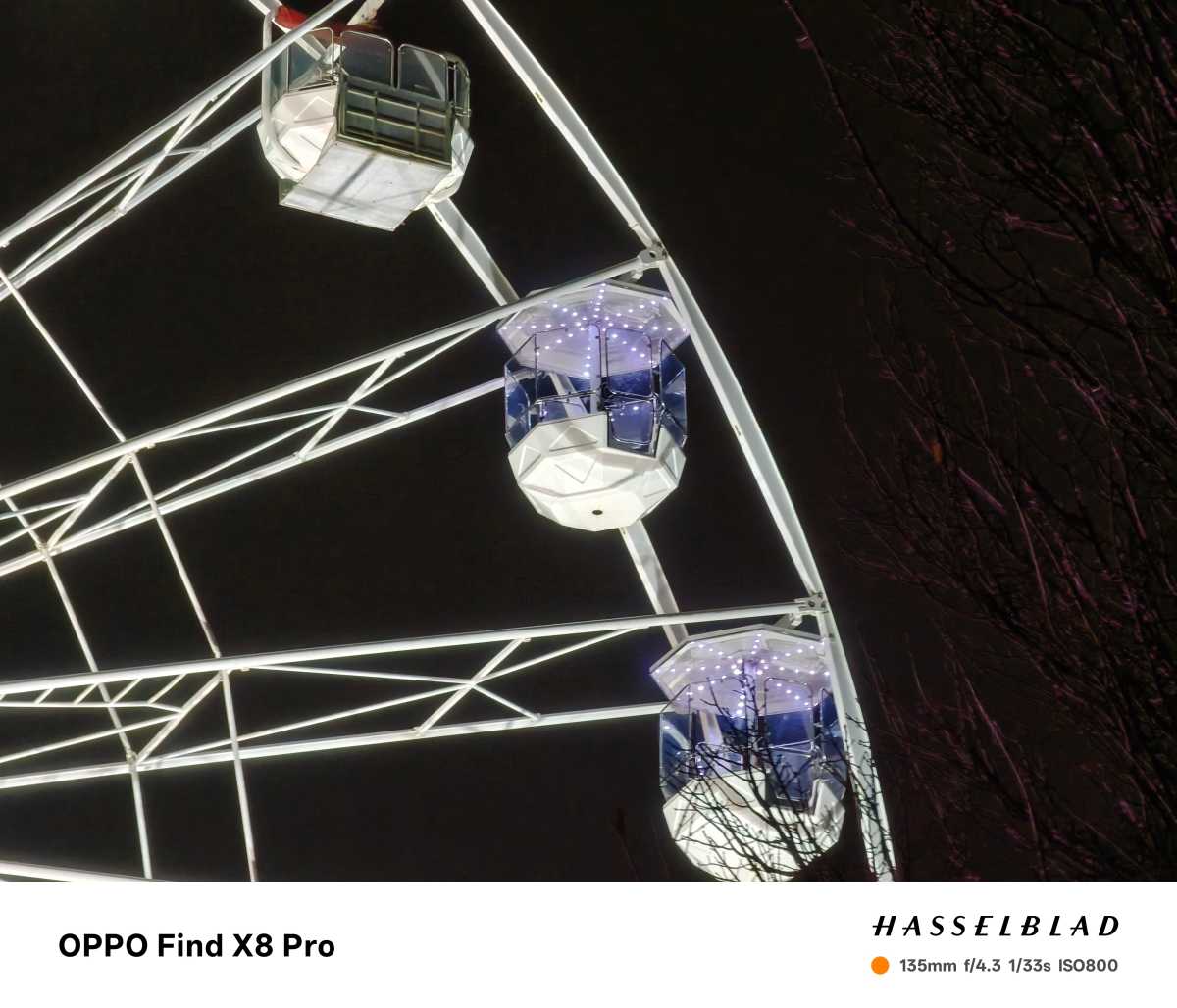 At a glance
At a glance
Expert’s Rating
Pros
- Awesome camera system
- Great battery life
- Super powerful
- New camera control button
- Useful AI features
Cons
- Smaller sensors than the X7 Ultra
- No autofocus on the selfie camera
- Magnetic charging only works with case
Our Verdict
Oppo’s latest flagship is quite possibly the best camera phone available in the UK. If you love taking photos, it demands your attention. Besides photography, the phone impresses with powerful performance, useful software features and great battery life. It’s just excellent.
Price When Reviewed
This value will show the geolocated pricing text for product undefined
Best Pricing Today
The Oppo Find X7 Ultra was one of the most impressive camera phones that I tested in the past year. However, there’s a big problem with that device. It was only launched in China, which means Western customers would need to import if they wanted to experience Oppo’s best phone for themselves.
With the Find X8 series, Oppo’s flagship handsets make a return to the global market, and thankfully, that includes the UK (though still not the US). This time around, there’s the standard Find X8 and the X8 Pro, but no X8 Ultra. The last generation had the Find X7 and Find X7 Ultra but no Pro.
So, where does the Oppo Find X8 Pro sit? Oppo told us it’s not a replacement for the X7 Ultra, but with a newer chipset, a bigger battery, and a refreshed operating system, it does seem like an upgrade. There’s plenty to explore here, including a fresh design, new software features and, of course, AI smarts. Let’s take a closer look.
Design & Build
- Multi-layer textured glass back
- Gorilla Glass Victus 2
- IP68/IP69 rated
- 215g
The Oppo Find X8 Pro has a similar design to the X7-series phones, with a large circular camera island that spans almost the entire width of the rear panel.
This time, though, the camera bump is significantly slimmer, making it much more pocketable than the X7 Ultra.

Luke Baker
Another big change is with the positioning of the lenses – they’re now evenly spaced and similarly sized, with the Hasselblad logo prominently stamped in the centre. This symmetrical look makes a lot more sense than the lop-sided lens array of the X7 Ultra.
It’s more comfortable in the hand than flatter iPhone-like designs, but still feels modern and fresh
The design is slightly boxier, with a mostly flat front and rear and micro curves at the edges. It’s a nice middle ground, as it’s more comfortable in the hand than flatter iPhone-like designs, but it still feels modern and fresh. If you prefer sharper edges, you might want to look at the standard X8, which has a very Apple-esque boxy frame.

Luke Baker
There are two colour options available in the global market: Pearl White and Space Black. I have the white version in for testing, which has a unique marble-like pattern on the glass rear panel, and it feels luxurious and velvety. Apparently, every phone has a slightly different pattern on the rear due to the way it’s manufactured.
If you opt for the black model, you’ll get a uniform matt black finish for a slick professional look. In either case, a simple transparent TPU case is included in the box. It’s pretty basic but offers good protection, and it’s always nice to get one as a freebie.

Luke Baker
Oppo has a new magnetic charging accessory, taking clear inspiration from Apple’s MagSafe system, but it only works if you buy Oppo’s magnetic case, as the magnets aren’t built into the phone itself. I would’ve loved to see a magnetic case included in the box, but maybe that’s just wishful thinking.
The phone still has the classic three-position notification slider on the left side, allowing you to quickly toggle between ring, vibrate and silent modes. On the opposite side, you get a volume rocker, a power button and a new addition, that Oppo is calling the Quick Button.
It’s essentially a carbon copy of Apple’s new Camera Control button, complete with a flush design and capacitive touch capabilities. A double press of this button will launch the camera, even while the phone is locked, and then you can swipe to zoom or press to take a photo.
I’m a fan of Apple’s new button, and I like this one too, but it could use some work. It’s not customisable at the moment, so it can only be used for zooming, and I don’t find that very useful. I’d love to see a half-press to focus like the shutter button on a Sony Xperia phone – I’ve got my fingers crossed that we’ll see added capabilities in future firmware.
The Oppo Find X8 Pro has an IP69 rating for dust and water resistance, a new standard that adds hot water jets up to 80 degrees to the testing criteria. I can’t say my phone is exposed to hot water jets very often, so I’m not sure how much this matters, but regardless, it’s well protected against even the most extreme elements.
Screen & Speakers
- 120Hz 6.78-inch OLED display
- 4500 nits max brightness, 1264 x 2780 resolution
- Stereo speakers
The Oppo Find X8 Pro has a large 6.78-inch OLED display with a 120Hz adaptive refresh rate and an impressive peak brightness of 4500 nits. That’s the same as the X7 Ultra, and it has a similar pixel density, too. The biggest change is with the shape of the display.

Luke Baker
Oppo calls it a “quad-micro curve” design, and it’s very similar to the one we saw on the Reno 12 Pro. The screen is almost completely flat, and it’s only the bezel area at the very edge of the phone that’s curved. The curves are symmetrical on all sides, giving the glass panel the appearance of an over-filled glass of water.
The screen is almost completely flat, and it’s only the bezel area at the very edge of the phone that’s curved
I’ve always preferred flat displays over curved ones, but this micro-curve middle ground has completely won me over. It means you have a completely flat display in all the areas where it matters, but gesture controls requiring you to swipe from the edges feel much nicer on your thumbs.
Shape aside, the screen has vibrant and accurate colours and it’s bright enough to compete with the sunniest of days. It also supports Dolby Vision playback, so content from apps like Netflix always looks superb. There’s plenty of customisation available if you want to tweak the colour temperature or vibrancy in the settings, too.
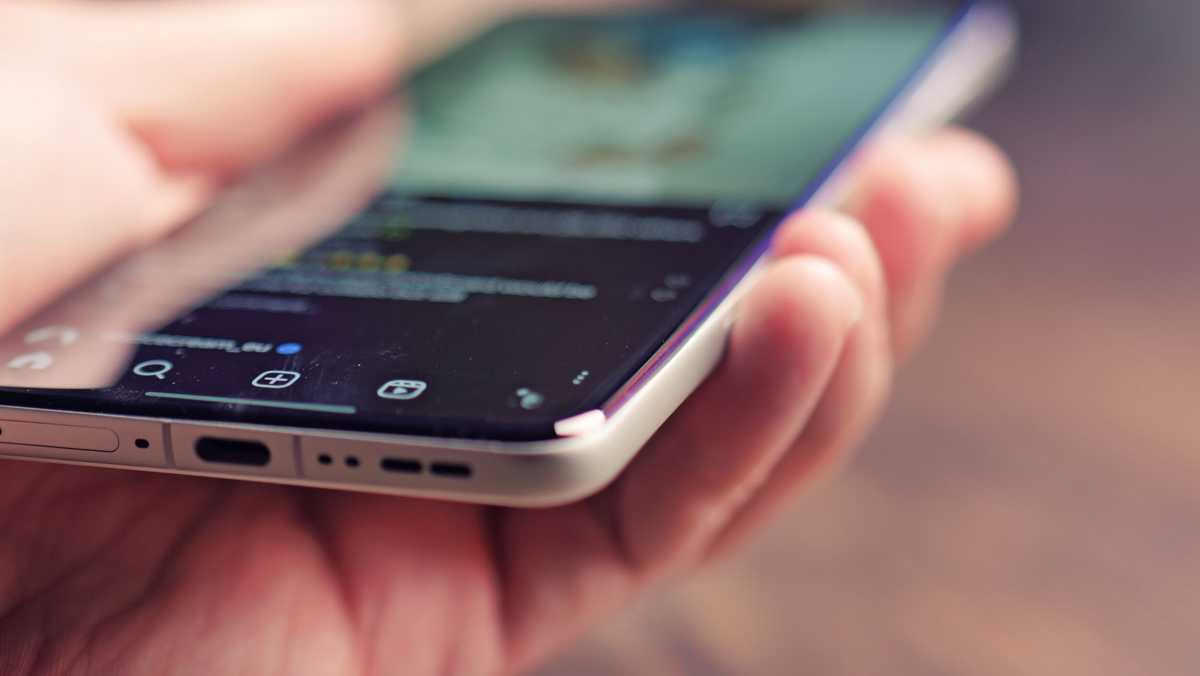
Luke Baker
The Find X8 Pro has dual stereo speakers which are quite impressive. They can boost to a very high volume and produce a clean detailed sound. The bass response isn’t the most impressive, but it’s decent enough for casual use and easily competes with most other flagship smartphones.
Specs & Performance
- MediaTek Dimensity 9400
- 12GB/16GB RAM
- 256GB/512GB/1TB storage
Both of Oppo’s new flagships are powered by the new Dimensity 9400 SoC, while the previous generation ran the Snapdragon 8 Gen 3.
I’m sure that will make some readers wince, but it shouldn’t. Qualcomm may have led in years past, but MediaTek is now a fierce competitor at the top end of the market, and the 9400 is its best effort so far.

Luke Baker
Put simply, the Oppo Find X8 Pro achieved some of the best benchmark scores I have ever seen. It even topples the mighty Redmagic 9S Pro in certain tests. Of course, upcoming Snapdragon 8 Elite-powered phones will give it a run for its money, but if you’re into graphically intensive games, this phone will not disappoint.
The Oppo Find X8 Pro achieved some of the best benchmark scores I have ever seen
The phone feels incredibly responsive and apps open almost instantaneously. I feel like some of this can be attributed to the new animation style of ColorOS 15, but the raw power on offer here certainly helps too.
I was able to run all my games with maxed-out graphical settings while maintaining solid high framerates. This includes notoriously challenging titles like Genshin Impact. The phone does heat up after playing for a while, but it never gets uncomfortable to hold, and I didn’t notice any significant frame dips when it got a little toasty, either.

Luke Baker
There’s a game overlay built into ColorOS, and it doesn’t seem like there have been any major changes to it since the last generation. Still, that means you get quick access to most settings you’re likely to need, including performance modes, messaging, notification blocking and more.
Oppo Find X8 Pro benchmarks
Cameras
- 50Mp main sensor, 1/1.4-inch
- 50Mp ultrawide, 1/2.75-inch
- 50Mp 3x telephoto, 1/1.95-inch
- 50Mp 6x telephoto, 1/2.51-inch
- 32Mp selfie camera, fixed focus
At a glance, it may appear that the camera setup is identical to the Find X7 Ultra. Indeed, both have quad 50Mp cameras on the rear, with dual periscope telephotos and 32Mp selfie snappers.
However, when you dig a bit deeper, there are changes to all of the cameras except the 6x telephoto.

Luke Baker
The sensor sizes are significantly smaller for the other three lenses, and it’s a particularly large step down on the main sensor, which is reduced from a 1-inch type sensor to a 1/1.4-inch unit. This move is an intentional step to keep the size of the camera bump in check, but improvements in sensor tech mean it still promises to deliver the goods in low light.
Despite the hardware differences, the resulting images are very similar to the X7 Ultra. I took a few shots side-by-side and it’s often hard to see much of a difference, especially in good lighting. The difference becomes more apparent in low-light conditions, where the ultrawide is prone to blur on the newer model, but the other sensors fare surprisingly well.
There are a few instances where the Find X8 Pro pulls ahead, too. Oppo has clearly been working on its autofocus system, and I was impressed to see that the phone recognised where my cat’s eye was, giving me pin-sharp photos even in challenging lighting.
I also noticed that the minimum focus distance has been reduced on the main and 3x lenses, which means you can take some impressive macro shots.
The shutter is faster, which is helpful for action shots, and you can shoot bursts at up to 7fps with no drop in quality. If you shoot a lot of sports or wildlife, this is a very good tool for the job.
If you zoom beyond 60x, Oppo’s AI enhancement kicks in, and it delivers some astonishing images. They aren’t exactly accurate, as the AI algorithm is just guessing and inventing extra details, but regardless, you can zoom to an incredible level without the usual grainy and blurry results.
If you shoot a lot of sports or wildlife, this is a very good tool for the job
The selfie camera is very decent, but I was disappointed to find that it lacks autofocus. In the majority of scenarios, that doesn’t matter too much, but it does mean your photos will be less sharp if you take a wide group photo or an extreme close-up.
The Hasselblad partnership is still in full effect, and some new portrait effects and film simulation modes are available with this phone. They’re an easy way to spice up your shots, and some create a very unique look, like the White ProMist filter. Enabling this gives your photos that classic “Vaseline on the lens” dreamy 80s look, and it’s fun to play with.
The phone is a very capable video shooter, too. It can capture at 4K 60fps on every lens, and it’ll do it in Dolby Vision HDR if you like. Stabilisation is great, the microphones sound decent and you can get surprisingly clear shots when zoomed past the optical telephoto range, all the way up to about 12x or so.
These video capabilities are about to get even better, as Oppo has announced that the Find X8 series will work with the Blackmagic Camera App. This means you’ll be able to shoot in LOG, apply LUTs and use a full suite of professional manual controls.
Battery Life & Charging
- 5910mAh battery
- 80W wired charging
- 50W wireless charging
The Oppo Find X8 Pro uses new silicon-carbon battery technology to cram a whopping 5910mAh cell into its relatively slim chassis. As you might expect, this results in very impressive battery life.
With my normal usage, I have been easily achieving a day and a half on a charge, and that’s with lots of camera use, streaming content and playing the occasional game. If you’re more conservative with your use, two days is a definite possibility.
I have been easily achieving a day and a half on a charge…two days is a definite possibility
That said, running out of battery isn’t the biggest hassle, as the Find X8 Pro can be recharged very quickly. My review sample came with an 80W fast charger in the box, and this took me from fully flat to around 70% charged in just 30 minutes. However, the phone ships without a charger in some regions, so you might need to factor in the cost of a decent wall adapter.
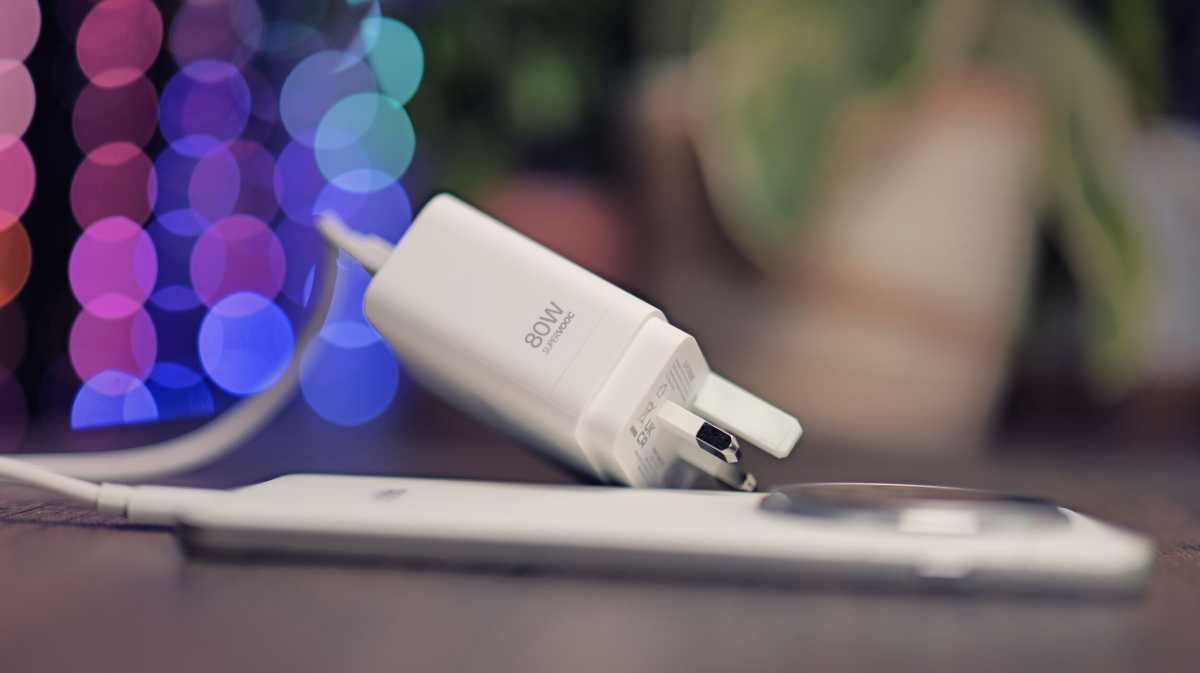
Luke Baker
As usual, the top 80W speed is only available using one of Oppo’s SuperVooc chargers, but thankfully, it’s still quick using a third-party USB PD charger. That’ll get you up to 55W, which isn’t too shabby, and means you won’t be waiting an age for the thing to charge using a power bank.
If you like to charge wirelessly, the Find X8 Pro supports up to 50W using an AirVooc charger. As mentioned earlier, there’s a new magnetic puck for this purpose, but you’ll need to buy Oppo’s magnetic phone case to use it effectively, as the magnets aren’t built into the phone itself.
Software & Apps
- ColorOS 15, based on Android 15
- AI features and Circle to Search
- Some bloatware
The Oppo Find X8 Pro runs ColorOS 15, Oppo’s freshly overhauled skin based on Android 15.
At first glance, it looks quite familiar, but it immediately feels quicker. This is because Oppo has tweaked over 800 animations, and it was well worth the effort because this feels much snappier than any previous Oppo device.
The Apple influence extends beyond hardware features and has seeped its way into the software, too.
ColorOS 15 has its own version of Apple’s Dynamic Island, which pops up and gives you quick access to media controls, hotspot status, Bluetooth devices and more. I’m a fan – it’s one of my favourite things about iOS, so I’m in full support of Android brands also adopting it.
You can also split the notification shade and quick settings, which feels like iOS again, but you can also keep the traditional configuration if you prefer. Most operating systems force you to use one or the other, so I really appreciate having the option to switch back and forth.

Luke Baker
The phone also comes with Circle to Search and has Google Gemini as the default assistant. These are both very handy, and I use them almost daily, but they’re starting to roll out more broadly and I have a feeling they’ll be default Android features before too long.
Of course, in late 2024, no flagship is complete without a healthy serving of AI features, and there’s plenty to sink your teeth into with the X8 Pro. I often feel like AI features are more like party tricks than things I’d use on a daily basis, but there are two features built into ColorOS that I wish I had access to on every phone.

Luke Baker
They’re called AI Speak and AI Summary, and can be accessed at any time by swiping from the side of the display to reveal the smart sidebar.
Essentially, if you need to read a long article, but you’re short on time, AI Summary can pick out the key information and give you a concise set of bullet points. Alternatively, AI Speak can read the article aloud in a natural-sounding voice so you can multitask.
They’re incredibly handy, and unlike some competitors, you don’t need to use Oppo’s browser or keyboard to access them – they work with Chrome, Firefox and more.
I’m very fond of ColorOS 15. It has loads of great features, feels quick and looks nice in the process
There are also writing tools like AI Writer and AI Reply that can help you craft an email, document or response. I don’t find these very useful, but that might be because I write for a living. Either way, they’re here and they also work across multiple apps.
As you may have gathered, I’m very fond of ColorOS 15. It has loads of great features, feels quick and looks nice in the process. Unfortunately, it’s not perfect, and there’s a full page of bloatware to deal with when you first set up the device. It doesn’t take too long to clean up, but it’s not what you want to see when you’re investing in a flagship handset.
Oppo promises the Oppo Find X8 series will get the latest security patches and Android updates until 2030, which should equal five major OS upgrades. It’s a very decent proposal, but it’s worth noting that Google and Samsung both support their devices for two years longer.
Price & Availability
The Find X8 Pro costs £1,049 in the UK. That’ll get you a model with 12GB of RAM and 256GB of storage, which looks to be the only one available.
You can buy the phone directly from Oppo outright and on contract via O2. If you’d rather go for the former, you can pair it with a great SIM-only deal.
As expected, the Find X8 Pro isn’t available in the US.
At this price, the Find X8 Pro is competing with the very best phones you can buy. Similarly-priced competition is fierce, including the Samsung Galaxy S24+ (from £999), Google Pixel 9 Pro XL (from £1,099) and OnePlus 12 (£999 for high-end model), but the phone holds its own.
Should you buy the Oppo Find X8 Pro?
After spending a week with the Oppo Find X8 Pro, I find myself with very few complaints. This phone excels in every metric. It’s powerful, good-looking, has amazing cameras and plenty of software perks too.
As a photography enthusiast, who values camera performance over everything else, I’d pick this over the best from Samsung, Apple or Google. No contest.
The competition from brands like Vivo and Xiaomi is fierce, but their best camera phones aren’t currently available in the UK. If we’re just talking about phones you can buy locally, the Find X8 Pro is almost certainly the best for photography.
I’d happily put up with more heft if it means larger sensors, and I’ve got my fingers crossed that there’s an X8 Ultra on the horizon. For now, though, this is more than good enough.
Specs
- ColorOS 15, based on Android 15
- 6.78-inch, 1264 x 2780, OLED, 120Hz
- In-display fingerprint sensor
- MediaTek Dimensity 9400
- 12GB / 16GB RAM
- 256GB / 512GB / 1TB storage
- Cameras:
- 50Mp main sensor
- 50Mp ultrawide
- 50Mp 3x telephoto
- 50Mp 6x telephoto
- 32Mp selfie camera
- Up to 4K @ 60fps rear video
- Stereo speakers
- Dual-SIM
- Wi-Fi 802.11 a/b/g/n/ac/6/7
- Bluetooth 5.4
- 5910mAh battery
- 80W charging
- 162.3 x 76.7 x 8.2 mm
- IP68/IP69 certified
- 215g
- Colours: Pearl White, Space Black




